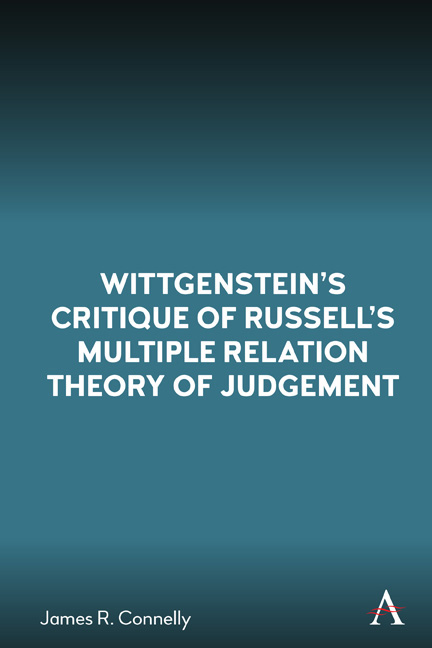4 - Wittgenstein on Truth, Logic and Representation
Published online by Cambridge University Press: 06 April 2021
Summary
The Picture Theory of Propositions
Wittgenstein's critique of Russell's MRTJ represents an important stage and episode within the development of his early philosophy, which culminates and finds its ultimate expression in the Tractatus Logico-Philosophicus (1922). The centrepiece of Wittgenstein's logical and semantic system as articulated in TLP is his picture (or model) theory of propositions. The picture theory both builds upon Wittgenstein's criticisms of Russell's MRTJ and offers an alternative to the MRTJ which is nevertheless thematically and philosophically consistent with it in many respects. Like the MRTJ, for instance, Wittgenstein's picture theory provides an account of the nature of propositional content and is also a correspondence theory of truth (David 2016). It aims to recover several features of the MRTJ while revising it to evade problems Wittgenstein sees as inherent in the MRTJ, including ND, WD and UP. Such features include direct realism, bipolarity and truth-functionality among others. It recovers Russell's direct realism by characterizing the meanings of the names contained in a proposition as the very objects that they stand for or go proxy for. It recovers bipolarity as a condition of significance or sense of propositions by characterizing propositions as intrinsically either true or false, depending upon whether the possible fact they portray either exists or does not. (The possible fact portrayed by a proposition is its sense.) It recovers truth-functionality by characterizing propositions as inherently part of a truth-functional calculus in which relations of entailment between propositions can be portrayed in truth-tables. It recovers Russell's distinction between truth-bearers (judgement complexes) and truth-makers (fact complexes) by characterizing the sense of propositions as independent of their truth, and their truth or falsehood as being contingent upon the mindand language-independent facts. In order to see how it purports to accomplish these things, and how it attempts to respond to difficulties inherent in Russell's MRTJ, it will be useful to trace the historical development of the picture theory out of Wittgenstein's critique of the MRTJ and into its mature expression in TLP.
- Type
- Chapter
- Information
- Publisher: Anthem PressPrint publication year: 2021

